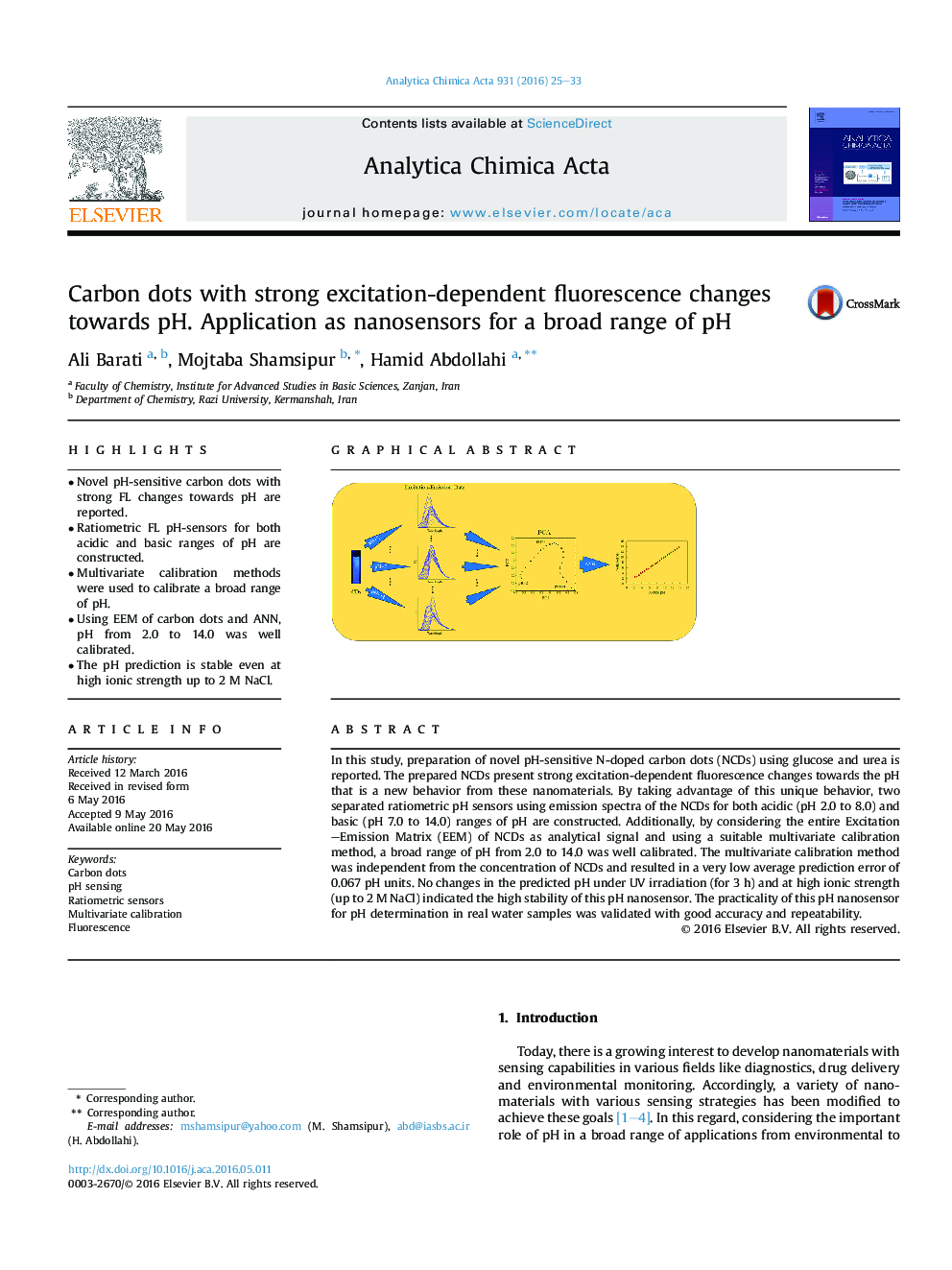| Article ID | Journal | Published Year | Pages | File Type |
|---|---|---|---|---|
| 1162717 | Analytica Chimica Acta | 2016 | 9 Pages |
•Novel pH-sensitive carbon dots with strong FL changes towards pH are reported.•Ratiometric FL pH-sensors for both acidic and basic ranges of pH are constructed.•Multivariate calibration methods were used to calibrate a broad range of pH.•Using EEM of carbon dots and ANN, pH from 2.0 to 14.0 was well calibrated.•The pH prediction is stable even at high ionic strength up to 2 M NaCl.
In this study, preparation of novel pH-sensitive N-doped carbon dots (NCDs) using glucose and urea is reported. The prepared NCDs present strong excitation-dependent fluorescence changes towards the pH that is a new behavior from these nanomaterials. By taking advantage of this unique behavior, two separated ratiometric pH sensors using emission spectra of the NCDs for both acidic (pH 2.0 to 8.0) and basic (pH 7.0 to 14.0) ranges of pH are constructed. Additionally, by considering the entire Excitation–Emission Matrix (EEM) of NCDs as analytical signal and using a suitable multivariate calibration method, a broad range of pH from 2.0 to 14.0 was well calibrated. The multivariate calibration method was independent from the concentration of NCDs and resulted in a very low average prediction error of 0.067 pH units. No changes in the predicted pH under UV irradiation (for 3 h) and at high ionic strength (up to 2 M NaCl) indicated the high stability of this pH nanosensor. The practicality of this pH nanosensor for pH determination in real water samples was validated with good accuracy and repeatability.
Graphical abstractFigure optionsDownload full-size imageDownload as PowerPoint slide
